Highways in Spain
The roads of Spain are useful for those who plan to rent a car. There are several types of roads in this country, but the main division is toll and free. If you want to save money, then any toll road in Spain can be bypassed for free! It does not happen that the path can only be paved by toll. Of course, the budget option can take more time, but it exists. To be sure, you can go to the road map of Spain or to the official website: all this is posted at the end of the article.
The following classification of roads in Spain does not really matter when driving, but rather curious.
Autopista is a road in Spain with lanes divided by direction. They are marked AP on signs, there are no single-level autopista intersections, there can only be multi-level junctions.
Autovía is a similar type of road, lanes in different directions are also separated, you can leave in limited places. Both autovía and autopista are Spanish expressways. They are located outside settlements.
Vía para automóviles is a Spanish highway, all lanes of which are located on one common platform, but exits are limited. You cannot stop at the side of the road unless something emergency happens.
Carreteras convencionales - roads with different characteristics. In Spain, these highways are divided into subtypes.
Vía de servicio are service roads in Spain. They are located near the main ones, for example, in areas with large industrial zones.
Pay special attention to toll roads in Spain. We will talk about them below, but here we will clarify that only autopista is paid.
Toll roads in Spain
In Spain, toll roads are marked with the PEAJE sign. On some of them you have to pay upon entry, on others - upon exit. In the second case, at the entrance you will receive a ticket card, which describes the exits, and also indicates the place of entry. Thus, the cost of a toll road in Spain depends on the distance.
You can pay for most of the roads in vending machines. There are separate lanes for trucks, as well as for payments with TeleTAC cards, which are clearly visible. The system helps to speed up the payment: the driver does not have to stop, as his car has a special device that allows paying for the road in Spain remotely. In addition, there are separate lanes for payment by bank cards and cash payments to people, not machines.
If you need a check from a toll road in Spain, then just press a special button.
Cost of toll roads in Spain
The cost of toll roads in Spain rises on sections with tunnels. In other parts, travel will be cheaper, but will significantly save travelers' time. Specific prices for different sections of Spanish toll roads are described below.
Parking in Spain
Parking in Spain is often paid, especially in the city center. During working hours, in some places it is not even possible to park without a special permit - the cities are so busy.
If the parking area in Spain is marked in blue, then you need to purchase a ticket from the machine. Payments are due at certain times, so check in advance.
Underground parking in Spain is common. It is often indicated in front of them whether there are empty spaces. You can pay for underground parking at the ticket office.
Illegally parked cars in Spain can be evacuated from many parking lots. This is usually indicated by a special sign, be careful. Later you will have to pay about 100 euros for towing!
Tunnels in Spain
The cost of toll roads in Spain depends on the specific area. Below are the most popular tunnels in Spain and the fares for passenger cars up to nine places with two axles. If a vehicle is towing a vehicle with two axles, then the cost of toll roads in Spain is usually higher.
The tunnel in Spain Cadi is about 5 kilometers long. The fare is just over 12 euros. Located near Barcelona.
Tunnel Vallvidrera, also located near Barcelona, \u200b\u200bbut only 2.5 kilometers long. The cost of this toll road in Spain is about 4 euros.
Before we started living in Spain, there was never an opportunity to understand and feel the difference between free and toll roads. In three months, we managed to drive almost 15 thousand km here (well, 4 thousand of them were a road from Moscow, but the remaining 10 thousand km are local).
What catches the eye in general after Russia:
In Russia they DO NOT know how to drive fast. Try to keep the speed of 80 km / h along the serpentine, which is allowed by the rules, at first it was difficult to drive even 50 km / h - this is recommended in some sections. We can talk for a long time about our experience and a powerful car, but local grandfathers on 30-year-old Citroen-heels really make almost any Russian on the serpentine) At least go to study again;
A LOT of machines on the handle. It is clear that the BMW of the 7th series will be on the machine, but Peugeot, knee socks, magic tricks, Fiats, Citroens, etc. - as one on the handle;
It is not accepted to pass at speeds up to 50 km / h. Pinch and squeeze too. If you turn on the turn signal on the highway, you can change it without looking in the mirror - they will definitely let you in;
If you are driving on the main, the one who is driving on the secondary will brake at the LAST moment. He will let you pass, let's smile, but at first it is very strange and unusual;
Many old cars are in good condition. A couple of times we tried to buy something like the W210 or E39 ... well, they are only good from the outside, even taking into account the price of 4-6 thousand euros, the body is yes, but there are years and years and runs of 300-500 thousand km. .. In the end, we stopped at a car with a guarantee. By the way, here even for 20-year-old cars they give a guarantee from 1 month to 1 year (if you take it from a dealer). But you come to good things quickly, 20-year-old cars with low mileage have not yet been found));
Typical ad:
Now to the roads:
Free roads are much more beautiful and interesting. Pass through cities, beaches, mountains, fields, cafes, restaurants. As tourists, we used to travel only on a paid basis. Very in vain;
Free roads are noticeably slower. Constant speed limits of 50-70 km / h, traffic lights at pedestrian crossings, constant circles (they are sooo loved in Spain. At first you don’t understand, but we’ve already felt it);
A nuance, if you want to drop into a store, cafe, gas station that you see on the horizon, you need to go to the stand-by for 300-500 meters. Extremely unusual;
Toll roads almost always have a limit of 120 km / h, but people tumble under 200 km / h. Most of the cars travel on a cruise of 125-130 km / h. There are few cameras. The fines are big. Police on the roads are rare. But this is Catalonia and not the season. In the south, people say that not everything is so happy.
Toll roads cost money. When we traveled from Barcelona to Alicante - it is 550-600 km, in total we paid more than 50 euros. Although usually everything costs 1-2 euros.
Pay attention to the 3+ button. If there are three or more people inside the car, then press. Then they will check on the cameras to see if there were 3 or more people in the car and give a discount (it will return to the card).
If you go to Andorra, there is a tunnel, 5 kilometers long, costs 19 euros, it takes 3 minutes to pass. On the way back we tried to go round for free. As a result, we traveled for 2.5 hours along a mountain serpentine at a speed of 30-40 km / h (it was simply impossible to go faster, because there were constant turns, ascents and descents). But very pretty.
Recently, short-term car rental is becoming more and more important, which allows the traveler to move around with comfort and not waste time on public transport. Having visited such a wonderful country like Spain, you should definitely consider renting a car to see the variety and beauty of Spanish cities. In most cases, car rental in Spain can be cheaper than taxi rides. This and much more will be discussed in this article.
Around Spain by car: profitable and convenient
It is not always possible to use your car to travel to other countries. Many people think that renting a car is too expensive, unreliable and dangerous. As practice shows, car rental in Spain is very profitable, simple and, of course, convenient. Spain is a very beautiful country, each city of which is unique in its own way. Therefore, in order to visit the most interesting corners of the country, a car is a must.
Car rental point
Considering that the price of a taxi ride around the city on a weekday will average 15 euros per 10 kilometers *, then renting a car for 30-50 euros (2340-3902 rubles) per day will be much more profitable.
Additional Information!Car rental in Spanish reads like this: “alquiler de automoviles”.
A little about car rental in Spain
You can rent a car in Spain at almost any Spanish airport or railway station. This is very convenient, since you will not need to spend money on a transfer to the hotel. A cheaper option would be to rent a car directly from the offices of companies located in Barcelona, \u200b\u200bMalaga and other major cities of the country.
Additional Information! In international rental companies such as EuropCar, Goldcar, Avis, Hertz, the choice of cars is much wider than in local agencies.
Approximate cost (per day) of car rental in international companies:
- Fiat 500 and similar models of other brands - 30-55 euros;
- Citroen C1 - 55-65 euros;
- bMW convertible - 90 euros;
- range Rover SUVs will cost 125-150 euros.

Types of cars
For a child seat, you will need to pay about five euros.
When paying for rental services from the client's card, a deposit of 300 to 1000 euros may also be charged, which will be returned to the account a week after the expiration of the contract. This condition is negotiated by the company in advance.
Most people are interested in the question, what kind of driving license is needed in Spain? To rent a car, you need an international driving license. Other documents include a passport and a credit card. Recently, it is allowed to rent a car in Spain with a new type of Russian license (plastic). Some companies also put forward other conditions for car rental, for example, the driver's age must be at least 21, and sometimes 23 years old, and it is also required to have a driving experience of 1 or 2 years. The car rental price also includes insurance with or without a deductible.
Important!You can drive a rented car outside of Spain (to the countries of the Schengen visa area), but then you will need to take out additional insurance.
Car fuel prices in Spain
Spanish gas stations have 95th and 98th gasoline and diesel fuel available. It is better to check the required type of fuel for a particular car with the rental company in advance. . Diesel car rental in Spain is generally more expensive. However, if the client plans to travel long distances, then the savings on gasoline pay off significantly.
Important!There is a single rule in Spanish car parks - the mobile phone must be switched off during refueling.
How much is gasoline in Spain today?
Fuel prices are as follows:
- gasoline Euro 95 - 1.1-1.5 Euro / l.
- Euro 98 - 1.2-1.6 Euro / l.
- diesel A - 0.97-1.2 euros / l.
Toll roads in Spain
The length of highways in Spain is about 16,600 kilometers, 2980 of which are toll for cars. Road fares include components such as distance traveled, type of vehicle, season. Sometimes even the congestion of free roads affects the cost of highways. Toll roads in Spain justify themselves due to the quality of the surface, as well as the absence of traffic jams.
Estimated cost of travel in some directions:
- Madrid - Adanero - 7.3 euros for 95 kilometers;
- Madrid - Toledo - 7.65 euros for 60 kilometers;
- Madrid - Guadalajara - 7 euros for 59 kilometers;
- Bilbao - Zaragoza - 32 euros for 298 kilometers;
- Seville - Cadiz - 7.3 euros for 95 kilometers.

Tunnel Cadi
Separate rates apply to special areas. Thus, travel by car through the Barcelona Cadi tunnel, 5 kilometers long, will cost the driver 12 euros. It will cost 3.78 euros to cover a distance of 2.5 kilometers through the Vallvidrera tunnel, and 4.25 during rush hour. Rush hour is considered to be weekdays from 7:30 to 10:30 and from 17:00 to 21:00.
Most Spaniards have automatic payment devices installed in their cars, thanks to which they can enter toll roads without stopping. For them, special traffic lanes are allocated, indicated by a blue circle and white stripes in a black square.

Spain toll road map
Traffic regulations in Spain
Before renting a car, you should familiarize yourself with the basic rules of the road in Spain, so as not to pay fines, which are very large here.
For movement on the territory of the country, the following speed limit is set:
- 50 km / h in settlements;
- 90 km / h outside the NP;
- 100 km / h on highways;
- 120 km / h for motorways.
To control the speed limit on the roads of Spain, speed cameras are installed, with the help of which the nearest police officer will be informed about the speeding of a certain vehicle. After that, the car will definitely be stopped, and the driver will be fined. Foreign tourists are required to pay small fines on the spot, with the receipt of an official check, otherwise the vehicle will be detained. With regard to alcohol while driving, the maximum allowable blood level is 0.5%, and for drivers with less than two years of experience - 0.3%. Exceeding the permissible norm will cost the violator 500 euros, and double exceeding the norm - 1000. The refusal of the driver to pass the test is punishable by a fine of 500 euros.
Important! Driving through the tunnels must be carried out with the dipped headlights on.
When transporting children under three years old, the car must be equipped with a special restraint system. For children from three years old, a child seat must be installed in the car. Children who are more than 135 centimeters tall must wear seat belts. Violation of the rules for transporting children will result in a fine of 200 euros.
The driver and all passengers must wear seat belts. The penalty for breaking this rule is 200 euros.
Note! The use of mobile communications is allowed only through special means (bluetooth earphone, loudspeaker) that do not occupy the driver's hands. Responsibility for such a violation is a fine of 200 euros.
It is noteworthy that in many provincial towns, traffic lights with radars are installed, which also regulate the speed limit. Even if the vehicle is slightly exceeding the speed limit, a red light immediately turns on at the traffic light.
Based on the above fines, it can be concluded that traffic rules in Spain are very expensive to violate.
Note! For riding bare-chested in the summer in Spain, there is a fine of 80 euros. If the passenger sitting in front decides to put his feet on the torpedo, it will cost the driver 100 euros.
Just in case, it is worth remembering the main emergency numbers of Spain:
- police - 091;
- ambulance - 061;
- fire service - 080.
It is better to build the necessary route scheme for traveling in Spain in advance. It is very convenient to use the navigator for this.
In general, car rental in Spain is a very good alternative to public transport and intercity buses. If you do not violate the Spanish traffic rules, renting a car will not only add comfort to the trip, but also save tourists' money.
* All prices in the article are valid for August 2018.
Many tourists who come to Spain on vacation prefer to rent a car immediately upon arrival at the airport to make their vacation more complete and comfortable. There are also those who come to this country, quite remote from Eastern Europe, in their cars. It's important for everyone to know the nuances spanish highwaysthat can be encountered while traveling in this country by car.
With this article on highway types, toll roads in Spain and how to use them, I am starting a series of articles with the help of which, I hope, the use of Spanish roads will become simple and convenient for auto travelers. So:
Motorways in Spain
There are two types of motorways in Spain - autovia and on both, if there are no restriction signs, the maximum permitted speed is 120 km / h. By the way, the speed limit sign 120 meets with enviable regularity, so it will be difficult to forget about the speed limit even with a strong desire.
 There are several differences between these two types of Spanish highways, but one thing is important for us - the road like "autovia" is free to travel, "autopeed" - toll. Both are indicated by signs on a blue background, but the toll road next to its designation will necessarily have a "Peaje" icon, a white circle with a red rim and a black horizontal stripe inside (pictured on the right).
There are several differences between these two types of Spanish highways, but one thing is important for us - the road like "autovia" is free to travel, "autopeed" - toll. Both are indicated by signs on a blue background, but the toll road next to its designation will necessarily have a "Peaje" icon, a white circle with a red rim and a black horizontal stripe inside (pictured on the right).
And here's what it looks like on large pointers:

As you can see, to travel to Madrid, you can choose both the toll AP34 motorway and the free A31. And here the exit to the right from the toll road also leads to the toll road. And here and there on the side of the designation there is a chargeable icon.

By the way, the quality of coverage on all highways in Spain, both paid and free, is beyond praise. I was especially struck by how much slower the tires wear out - on my Renault Megan I have already traveled more than 80 thousand, and the tread height is even more than sufficient. In Russia, the mileage figures for one set of tires were much more modest.
How to pay toll roads in Spain
The toll system in Spain is quite simple and straightforward. Usually, it is worth driving through the paid section once, and in the future no problems arise. But there are still a couple of pitfalls here. I will try to write about them in more detail.
 So, having decided to choose a toll road, you must drive through the entrance terminal. Everything is very simple here, you drive up to any of the terminals, above which a green traffic light or a green arrow is on, stop in front of a lowered barrier. To your left is a terminal in the form of a metal yellow locker. There is no need to press anywhere - in just a couple of seconds a ticket pops up from the terminal, which must be taken (in the photo on the right). The barrier opens, and, forward, you can go on the photo - the appearance of the entrance terminal on the toll highway).
So, having decided to choose a toll road, you must drive through the entrance terminal. Everything is very simple here, you drive up to any of the terminals, above which a green traffic light or a green arrow is on, stop in front of a lowered barrier. To your left is a terminal in the form of a metal yellow locker. There is no need to press anywhere - in just a couple of seconds a ticket pops up from the terminal, which must be taken (in the photo on the right). The barrier opens, and, forward, you can go on the photo - the appearance of the entrance terminal on the toll highway).

The ticket must be kept - the place of entry to the toll road is fixed on it. Based on this, the payment amount will be calculated. If you lose your ticket, it will be considered that you are driving from the very beginning of the road. While everything is very simple, the only difficulty may arise when you exit the toll Spanish motorway. Let's take a closer look at this point.
So, after leaving the toll road following the sign to the desired direction (or on the advice of the navigator), after a few hundred meters, you will see a large terminal for paying for the fare:

First of all, we pay attention to the color of the traffic light or the arrow above the terminal - if it is red, as above the photo above the leftmost one, then this terminal is temporarily closed, there is no need to go there.
The next point is that many cars in Spain are equipped with a remote payment system, special terminals are equipped for them, through which they pass without stopping (the barrier rises automatically, having received a signal from a device installed on the front glass). The terminals for these cars can be of two types - exclusively for them (in this case, the white letter "T" is located in the blue circle), it is impossible to drive through it without a device, and general (denoted by the same letter "T", but already in the blue square ), in this case you can use this terminal to exit.
And the last important point is the payment method. There are separate passages for payment exclusively with bank cards (see the photo above), it will not be possible to pay in cash in them. There are universal machines (on the same photo), where you can pay in cash or by credit card. Using his example, we will analyze the payment process. We drive up, stop near the machine. The slot where to insert the ticket is highlighted in red. Insert the green arrow upwards, as in the photo:

The amount to be paid appears on the monitor immediately:

Now you can go into your wallet for cash or credit card:

We pick up the change at the bottom, if we paid in cash, the barrier opens, and "Bon voyage" from the terminal:

And in conclusion, a few words about the simplest payment method - manual with the help of an operator. If you see a large sign at the top with the word MANUAL, and under it there is a booth, which means that at this point of payment there is an operator to whom you can simply give a ticket and pay in cash or by card. In recent years, this payment method is not available at every motorway exit, so it is better to be prepared for the fact that you will have to deal exclusively with technology.
As a rule, a road sign or an electronic board informs you that you are entering a toll section of the road, which also indicates how many kilometers or minutes on the road a toll booth with a barrier is waiting for you.

Payment Methods:
Cash (coins and banknotes);
credit cards. Toll Highways supports the latest in electronic payment security, such as online transaction verification and EMV (chip card);
Telepeaje is a modern payment system that allows you to pay for the toll road without stopping in front of the barrier, thus not wasting a minute of your time. Today telepeaje technology is installed on all highways in Spain and many paid parking lots. A special antenna reads data from a mobile device installed on the car's dashboard and automatically debits funds from a bank card or account attached to a specific device's account.
At a gas station

As a rule, all Spanish highways, paid and free, have convenient areas for rest, washing and refueling the car. A gas station can be a whole complex consisting of a restaurant, a shop with local products, an automatic car wash.
To refuel the car, you need to pay for the required amount of liters of fuel at the checkout, calling the dispenser number, and then go back to the car and insert the gun. Most of the Spanish gas stations are self-service. In 2016, the well-known network Repsol launched a mobile application with which you can pay at 300 gas stations in Spain. To do this, you need to install the application on your mobile device, enter your personal data and information about the card or bank account. In the near future, other companies are planning to switch to similar payment methods, which will make the process of refueling a car more comfortable and faster.

After you have reached the desired place, the question arises about parking the car. This topic is especially relevant due to the constant growth of fines for non-compliance with parking rules. As we noted earlier, in many Spanish parking lots, payment can be made using telepeaje technology using a mobile device. But this most often applies to large closed parking lots, underground or on the territory of shopping centers, where payment machines are also installed at the entrances and exits.
If you are parking on the streets, always pay attention to the color of the road markings. The white zone is free, and such limited parking spaces can be found in areas far from the city center. In popular tourist areas, you can often find a blue parking zone, which must be paid for in special machines located directly on the street. The coupon with the date and time of payment is left on the dashboard.
It is important to remember that the maximum parking time in the blue zone is 1 to 4 hours, depending on the area. Blue Parking is paid on weekdays from 9:00 to 14:00 and from 16:00 to 20:00, on Saturday - from 9:00 to 14:00. The cost of such a city parking depends on the congestion of the area. 4 basic rates apply:
- tariff A - 2.5 euros / hour;
- tariff B - 2.25 euros / hour;
- tariff C - 1.96 euros / hour;
- tariff D - 1.08 euros / hour.
In addition to white and blue, there are orange and green zones that provide special benefits to residents of the area. For the possibility of preferential or free parking, you must have an official registration. Be careful, as some areas are strictly reserved for local parking.

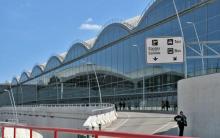
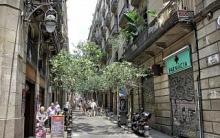

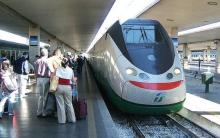
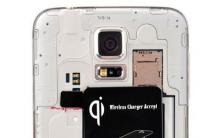
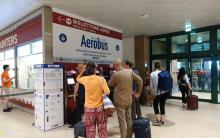




How to get from Madrid (Barajas) airport to the city center?
How to get from Barcelona airport Plan of Barcelona airport terminal 1
Buses in Sicily Ski map with bus routes
Rent a car in spain
Main characteristics of batteries